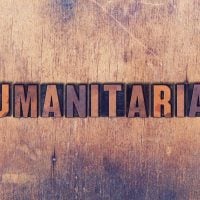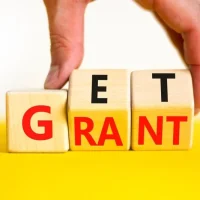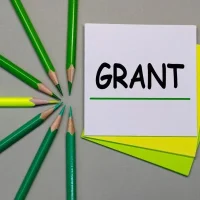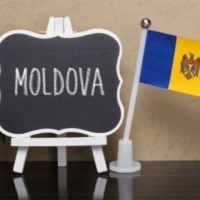Deadline: 07-Mar-2025
NOS Office of National Marine Sanctuaries (ONMS) is seeking proposals under the Pacific Northwest B-WET program to support locally relevant, authentic experiential learning in the K-12 environment.
The NOAA Bay Watershed Education and Training (B-WET) program was established in 2002 in the Chesapeake Bay watershed and currently exists in seven regions: California, Chesapeake Bay, Hawaii, Gulf of Mexico, New England, Pacific Northwest, and Great Lakes. The Pacific Northwest B-WET regional program is managed by NOAA’s Office of Education and NOAA’s Olympic Coast National Marine Sanctuary. Olympic Coast National Marine Sanctuary was designated in 1994 as the first national marine sanctuary in the Pacific Northwest. It encompasses nearly 3,200 square miles off the Washington coast, extending from Cape Flattery to the mouth of the Copalis River and protects significant natural and cultural resources.
The Pacific Northwest B-WET program supports grantee capacity building and connects grantees to local NOAA assets and relevant STEM (Science, Technology, Engineering, and Mathematics) expertise, while being responsive to local education and environmental priorities. For the purposes of this solicitation, the Pacific Northwest region is defined as Oregon and Washington.
NOAA recognizes that knowledge and commitment built from firsthand experience, especially in the context of one’s community and culture, is essential for achieving environmental stewardship. Carefully selected experiences driven by rigorous academic learning standards, stimulating discovery and wonder, and nurturing a sense of community will further connect students with their watershed, help reinforce an ethic of civic participation, and promote academic achievement. Experiential learning techniques, such as those supported by the NOAA B-WET program, have been shown to increase interest in STEM, thus contributing to NOAA’s obligations under the America Competes Act (33 USC 893a(a)).
Priority Areas
- The FY25 Pacific Northwest B-WET funding announcement focuses on the following priority areas:
- Systemic classroom-integrated Meaningful Watershed Educational Experiences (MWEEs) for K-12 students that promote climate resilience and include high-quality teacher professional development related to the MWEEs; and
- Meaningful Watershed Educational ExperiencesMWEEs) for K-12 students that appropriately involve Indigenous Knowledge and promote climate resilience.
Program Priorities
- MWEE Supporting Practices
- The MWEE also includes four supporting practices that describe “what teachers do,” along with their partners, to ensure successful implementation with students. The supporting practices are Teacher Facilitation, Learning Integration, Sustained Experiences, and Local Context.
- Teacher MWEE Professional Development Characteristics
- Professional development providers play a crucial role in preparing teachers to implement successful MWEEs with their students. Professional development that includes characteristics such as: relevant content; explicit modeling of educational frameworks; collaboration, feedback and modeling instruction such as student-centered teaching; adequate time for professional development including time for ongoing support; and offering participation incentives that teachers value leads to a variety of positive outcomes. Professional development should empower teachers to confidently and competently use the MWEE framework to support standards-based learning that aligns with local education agency initiatives. Teachers should gain confidence in the value of MWEEs and strategies for conducting them so that they will be able to implement MWEEs after the professional development has ended. To set teachers up for success, the following six overarching characteristics, informed by education research and evaluation results, are recommended for inclusion in professional development to support teachers implementing MWEEs.
Funding Information
- Approximately $750,000 will be available in fiscal year 2025. NOAA may consider funding applications to this opportunity in a future fiscal period without repeating this competitive process.
- The minimum federal amount to request from NOAA is $60,000. The maximum federal amount that should be requested is:
- $75,000 for one-year (12 months) projects, or
- $150,000 for two-year (24 months) projects.
- Project start date should be on or after August 1, 2025. Recipients may be asked to modify the project start date. Please discuss the flexibility of the requested start date in your project description.
- The project duration may be up to 24 months. Applications must include a project description and a budget for the entire proposed project period.
Eligibility Criteria
- Eligible applicants are: K-12 public and independent schools and school systems; institutions of higher education; community-based and nonprofit organizations; regional, state or local government agencies; interstate agencies; and Indian tribal governments. For-profit organizations, foreign organizations, and foreign public entities are not eligible to apply; however, for-profit and foreign organizations and foreign public entities may participate as a project partner with an eligible applicant. Federal agencies are not allowed to receive funds under this announcement but may serve as collaborative project partners and may contribute services in kind. Individuals are not eligible to apply. While applicants do not need to be located in the targeted geographical regions specified in the program objectives, the primary participants of the projects must be located in the geographical regions specified in the program objectives. For the purposes of this solicitation, the Pacific Northwest region is defined as Oregon and Washington.
For more information, visit Grants.gov.









































